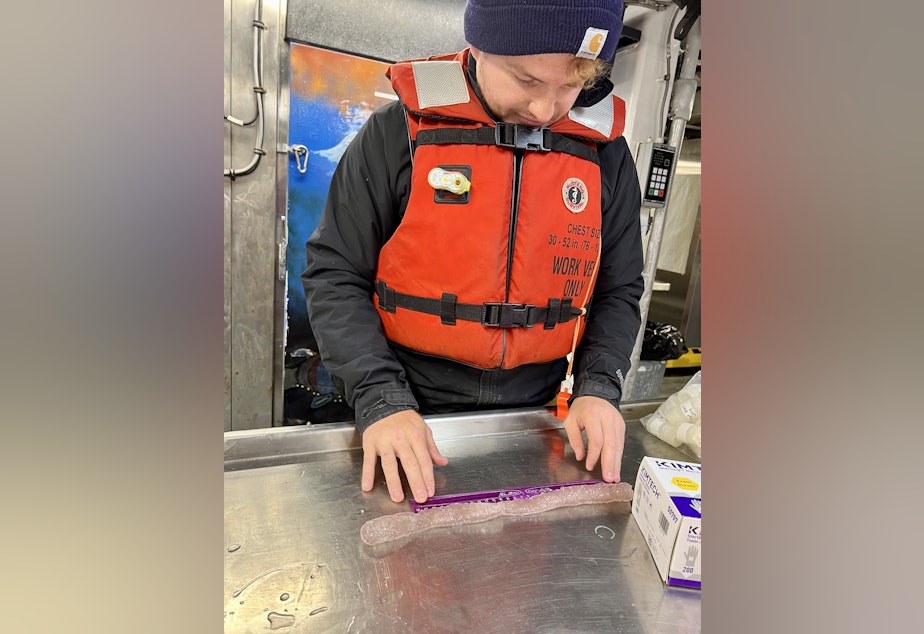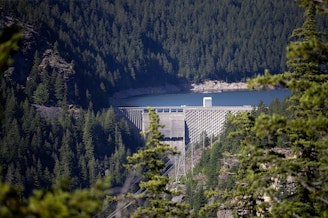Pickle-shaped sea creatures popping up along the NW coast, why it’s important

Around five years ago, scientists surveying the coast off Oregon and Washington found something odd: Pickle-shaped sea creatures.
It was a mystery. These strange, tropical organisms showed up en masse, clogging nets and intriguing scientists.
“I had to look up pyrosomes for the first time. I had seen one once way off shore and then all of a sudden, our nets were filled with them,” said Jennifer Fisher, a zooplankton ecologist with the National Oceanic and Atmospheric Association.
Fisher reminisced about her first pyrosome encounter while aboard NOAA’s research vessel, the Bell M. Shimada, in May 2022. On that trip, the team didn’t pull up quite as many pyrosomes because the waters were still a bit too cool.
It turns out these organisms thrive in warm water – and they come to the Northern California Current, which flows just off the Oregon and Washington coastlines, along with the infamous “blob.” That’s a marine heatwave that raised water temperatures for years.
Sponsored
Now, Fisher said, organisms more often found in warm waters appear to be sticking around.
“Now we're seeing this mix (of warm and cold communities). I don't know if that’s lingering effects to the marine heatwave, or if this is maybe the new normal. We need to just keep monitoring, see what happens,” Fisher said in a 2022 interview.
A first-of-its-kind study out of Oregon State University and NOAA is shedding light on how the ocean’s food web is reacting to these marine heatwaves, which are expected to increase in frequency and intensity as the climate changes.
Turns out, pyrosomes are a big winner in the heatwave lottery.
The Northern California Current had no documented pyrosomes before the heatwave, said Dylan Gomes, lead author of the study, which was published in the journal Nature Communications.
Sponsored
“They're not as abundant as they were immediately following that first marine heatwave but they're still around. Then, there are other creatures that declined. Krill is one example. It's a really important food source for a lot of our fish species,” Gomes said.
In addition, he said, pyrosomes take up a lot of the energy flowing through the ocean. Around 98% of the energy going into pyrosomes just dead-ends because no other marine species are eating these weird organisms, Gomes said.
“A lot of energy seems to have shifted away from things like krill, and towards the pyrosomes during these marine heat waves,” Gomes said. “That ultimately means less Pacific hake, less chinook salmon, things like that – the fish species that we really care about.”
A shifting oceanic food web could be a major challenge in helping save Pacific Northwest salmon, scientists have said.
To learn more about the food web, Gomes updated an end-to-end ecosystem model with information from the marine heatwave. That allowed him to get a holistic view of what is going on.
Sponsored
While marine heatwaves often affect the ocean’s surface, deeper waters stay cool, he said. But that doesn’t mean those deep waters aren’t affected by the changing temperatures higher up.
“The critters that live down in the deepest parts of the ocean get nutrient influxes from higher layers in the ocean,” Gomes said. “As food is falling to the bottom of the ocean, those creatures are going to be impacted by what's happening at the surface. We miss all of that if we don't look at the whole ecosystem together.”
As the climate continues to change, the waters off the Pacific Northwest may see more “blobs.” That’s why it’s important for managers to plan for the future, Gomes said.
“We need to be able to flexibly change the management of our oceans,” Gomes said. “Whether that's how we fish, or what we're fishing for, or where we're fishing. We need to be able to adapt to the current conditions, more or less in real time, so that we're not putting undue stress on populations that are already weakened by harsh conditions.” [Copyright 2024 Northwest News Network]



